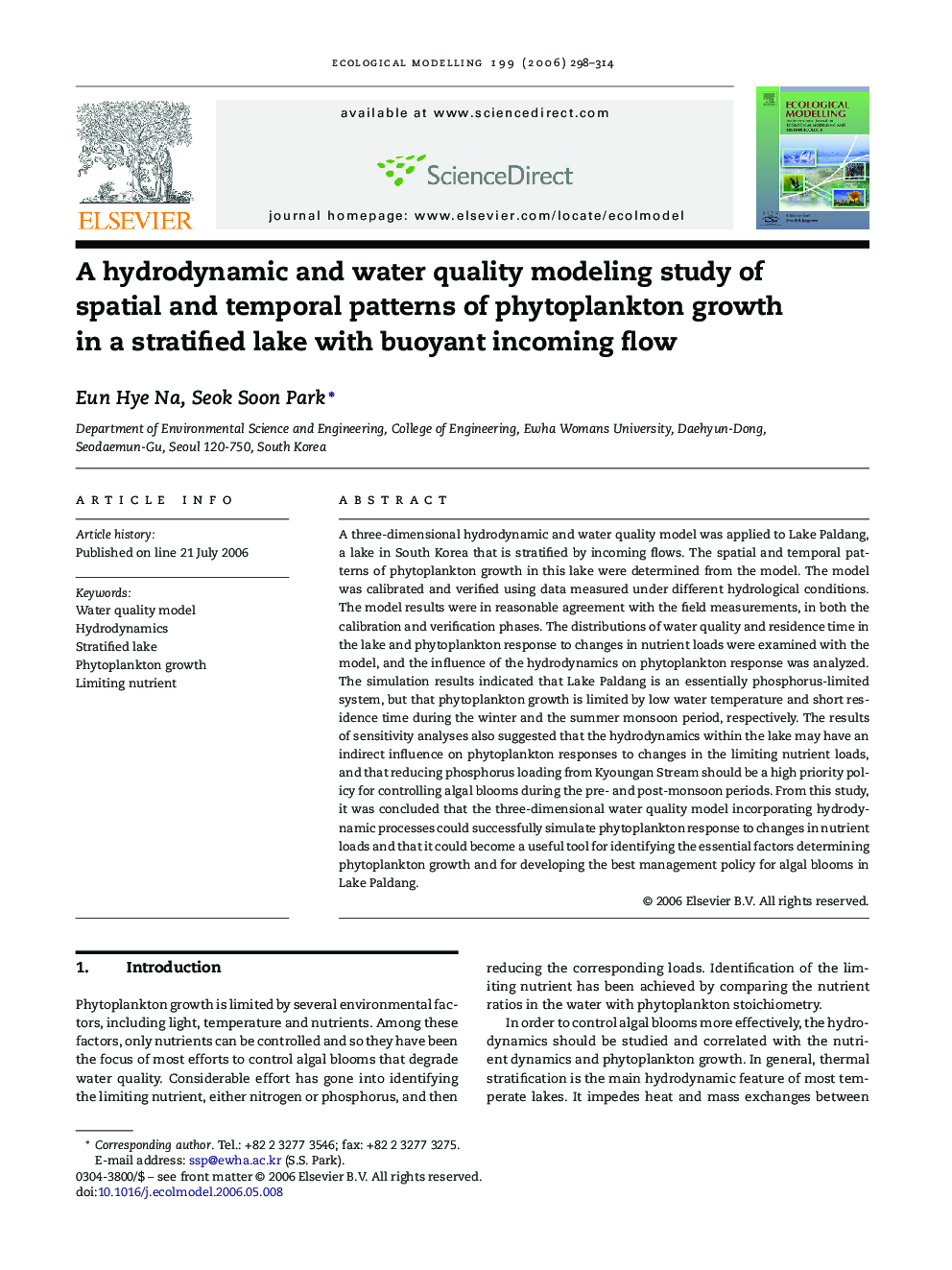| Article ID | Journal | Published Year | Pages | File Type |
|---|---|---|---|---|
| 4378949 | Ecological Modelling | 2006 | 17 Pages |
A three-dimensional hydrodynamic and water quality model was applied to Lake Paldang, a lake in South Korea that is stratified by incoming flows. The spatial and temporal patterns of phytoplankton growth in this lake were determined from the model. The model was calibrated and verified using data measured under different hydrological conditions. The model results were in reasonable agreement with the field measurements, in both the calibration and verification phases. The distributions of water quality and residence time in the lake and phytoplankton response to changes in nutrient loads were examined with the model, and the influence of the hydrodynamics on phytoplankton response was analyzed. The simulation results indicated that Lake Paldang is an essentially phosphorus-limited system, but that phytoplankton growth is limited by low water temperature and short residence time during the winter and the summer monsoon period, respectively. The results of sensitivity analyses also suggested that the hydrodynamics within the lake may have an indirect influence on phytoplankton responses to changes in the limiting nutrient loads, and that reducing phosphorus loading from Kyoungan Stream should be a high priority policy for controlling algal blooms during the pre- and post-monsoon periods. From this study, it was concluded that the three-dimensional water quality model incorporating hydrodynamic processes could successfully simulate phytoplankton response to changes in nutrient loads and that it could become a useful tool for identifying the essential factors determining phytoplankton growth and for developing the best management policy for algal blooms in Lake Paldang.
